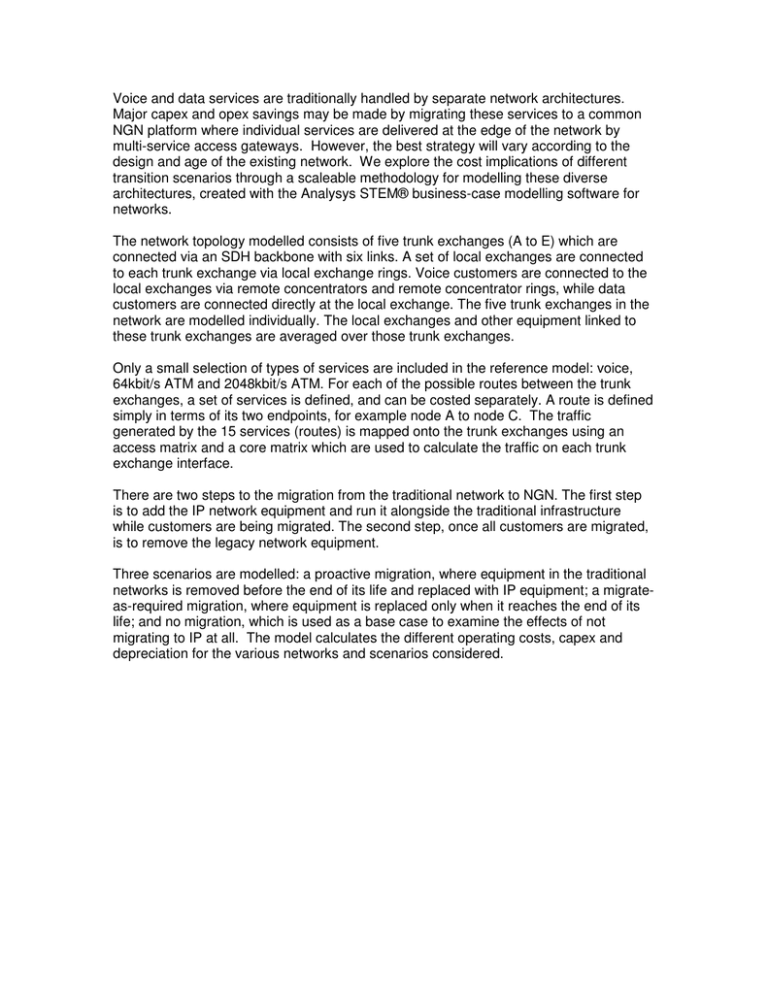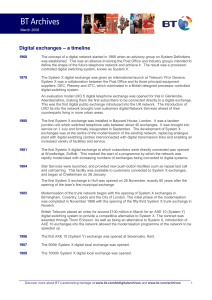Voice and data services are traditionally handled by separate network... Major capex and opex savings may be made by migrating...
advertisement

Voice and data services are traditionally handled by separate network architectures. Major capex and opex savings may be made by migrating these services to a common NGN platform where individual services are delivered at the edge of the network by multi-service access gateways. However, the best strategy will vary according to the design and age of the existing network. We explore the cost implications of different transition scenarios through a scaleable methodology for modelling these diverse architectures, created with the Analysys STEM® business-case modelling software for networks. The network topology modelled consists of five trunk exchanges (A to E) which are connected via an SDH backbone with six links. A set of local exchanges are connected to each trunk exchange via local exchange rings. Voice customers are connected to the local exchanges via remote concentrators and remote concentrator rings, while data customers are connected directly at the local exchange. The five trunk exchanges in the network are modelled individually. The local exchanges and other equipment linked to these trunk exchanges are averaged over those trunk exchanges. Only a small selection of types of services are included in the reference model: voice, 64kbit/s ATM and 2048kbit/s ATM. For each of the possible routes between the trunk exchanges, a set of services is defined, and can be costed separately. A route is defined simply in terms of its two endpoints, for example node A to node C. The traffic generated by the 15 services (routes) is mapped onto the trunk exchanges using an access matrix and a core matrix which are used to calculate the traffic on each trunk exchange interface. There are two steps to the migration from the traditional network to NGN. The first step is to add the IP network equipment and run it alongside the traditional infrastructure while customers are being migrated. The second step, once all customers are migrated, is to remove the legacy network equipment. Three scenarios are modelled: a proactive migration, where equipment in the traditional networks is removed before the end of its life and replaced with IP equipment; a migrateas-required migration, where equipment is replaced only when it reaches the end of its life; and no migration, which is used as a base case to examine the effects of not migrating to IP at all. The model calculates the different operating costs, capex and depreciation for the various networks and scenarios considered.






